Andaman Tastalogue Part 2 : The Cellular Jail : Architecture and History
As I stepped into the Bangalore airport at 1:00 a.m., the excitement for my Andaman adventure was palpable. With a 4:30 a.m. flight to catch, I had some time to kill. Luckily, I had access to the airport lounge, courtesy of my credit card. The lounge was a haven, offering a peaceful atmosphere, internet access, and a delicious full-course dinner. Despite the satisfying meal, I still had a couple of hours to spare. As the flight preparations began, the lounge staff surprised me with a breakfast menu, which I eagerly devoured.

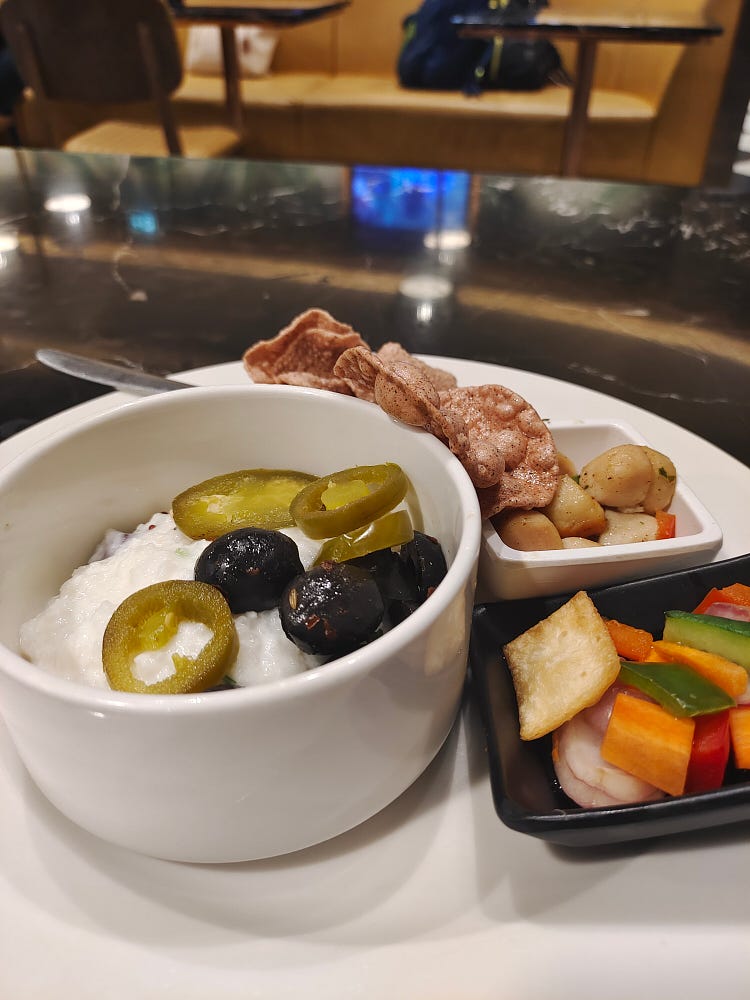
Before I knew it, I was boarding the flight, and the two-hour journey to Port Blair flew by (literally!). As the plane took off, I dozed off instantly, only to wake up to the breathtaking sight of the sun rising over the Andaman Sea.
Arrival in Port Blair
As I stepped out of the Veer Savarkar Airport (formerly known as Port Blair Airport), I was struck by the simplicity of the surroundings. The airport, though small, was well-maintained, with a few shops and minimal amenities. My hotel room was conveniently located just opposite the airport, and the staff welcomed me with warm smiles.

After a quick check-in, I succumbed to my exhaustion, skipping an entire night’s sleep. A rejuvenating nap later, I set out to explore Port Blair.
A Glimpse into History: Cellular Jail
My first stop was the infamous Cellular Jail, a place steeped in history and emotion. As I walked through the remains of the seven-winged structure (only three wings remain, the rest destroyed by an earthquake), I felt a deep sense of reverence. The jail, once a symbol of British oppression, now stands as a testament to the sacrifices of India’s freedom fighters.
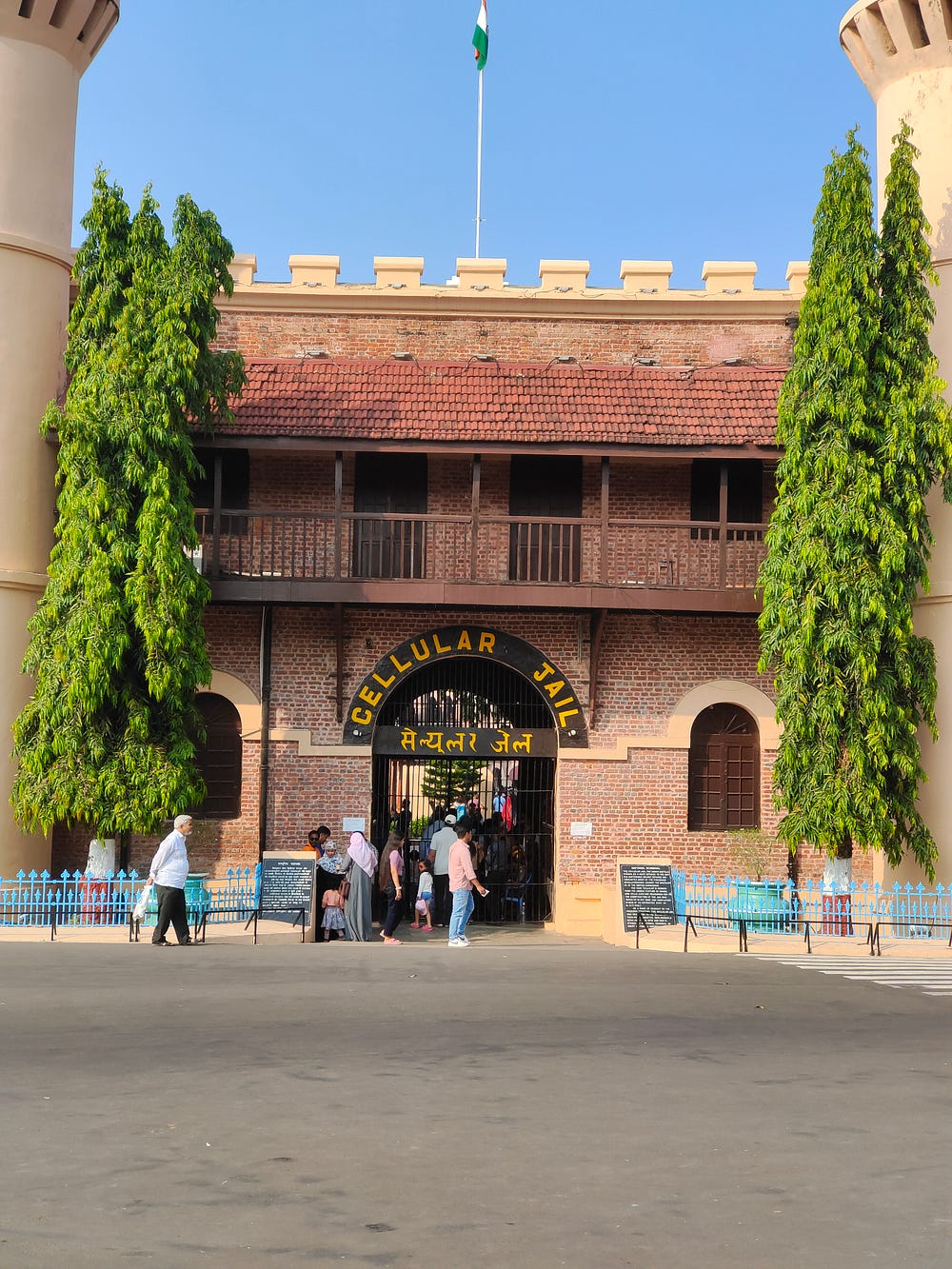
As I stepped into the Cellular Jail, I was struck by its imposing architecture. The prison’s original structure, built by the British in 1906, consisted of seven wings radiating from a central watchtower, resembling a bicycle wheel. This unique design allowed a single guard to monitor all the cells, emphasizing the British desire for control and surveillance. The sheer scale of the prison was daunting, and I couldn’t help but feel a sense of unease as I walked through its corridors.
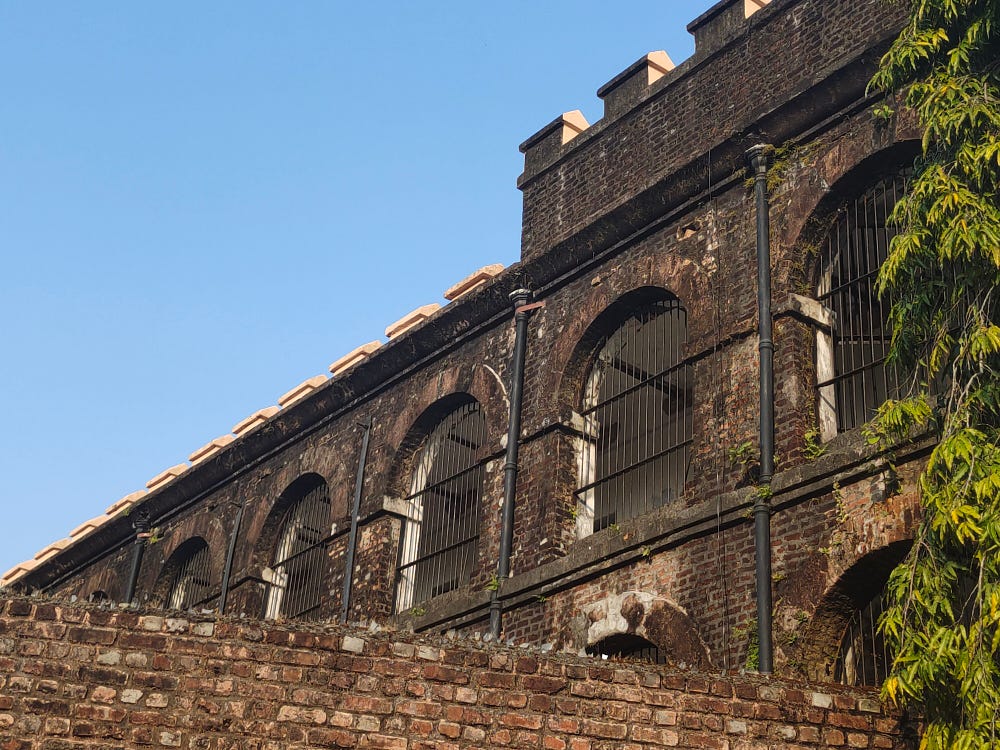
Despite its ominous appearance, the Cellular Jail played a pivotal role in India’s struggle for independence. From 1906 to 1945, the prison housed numerous Indian freedom fighters. The British used the jail as a means to isolate and punish these revolutionaries, subjecting them to inhumane treatment, forced labor, and brutal punishments. As I walked through the prison’s cells, I couldn’t help but feel a sense of reverence for the brave men and women who had endured such hardships.
The Cellular Jail, a testament to the British colonial era’s oppressive regime, boasts an imposing architecture that reflects its brutal purpose. Built in 1906, the prison’s original structure consisted of seven wings, radiating from a central watchtower, resembling a bicycle wheel. This unique design, conceived by the British architect, Major P.L. Bradley, allowed a single guard to monitor all the cells, emphasizing the British desire for control and surveillance. The sheer scale of the prison, with its high walls and imposing gates, was designed to intimidate and subdue.

The prison’s architecture was carefully planned to maximize security and minimize the risk of escape. The cells were arranged in a radial pattern, with each wing connected to the central watchtower. This design enabled the guards to keep a constant eye on the prisoners, making it virtually impossible for them to escape. The cells themselves were small, cramped, and devoid of natural light, with dimensions measuring a mere 13.5 feet by 7.5 feet. The walls were constructed using local limestone and brick, with the labor provided by the prisoners themselves. This not only reduced construction costs but also served as a means of punishing the prisoners. The prison’s architecture was a physical manifestation of the British colonial regime’s brutal suppression of India’s freedom fighters.

The watchtower, a central feature of the Cellular Jail, was designed to provide an unobstructed view of the entire prison. The tower stood at an impressive 120 feet tall, allowing the guards to monitor the prisoners from a distance. The watchtower was connected to the wings of the prison by a series of bridges, which enabled the guards to move quickly and easily between the different sections of the prison. The bridges also served as a means of transporting prisoners between the cells and the hard labor areas. The watchtower and bridges were a constant reminder to the prisoners of the ever-present gaze of their captors, adding to the sense of mental torture and despair.

One of the most striking features of the Cellular Jail’s architecture is its use of solitary confinement cells. The prison was designed to house 694 prisoners, each in their own solitary cell. This was a deliberate attempt to break the prisoners’ spirits and destroy their sense of community. The cells were designed to be escape-proof, with thick walls, iron bars, and a single entrance. The prisoners were subjected to hard labor, and their living conditions were deliberately made harsh to crush their morale. The prison’s architecture was designed to perpetuate a sense of fear, isolation, and despair among the prisoners.
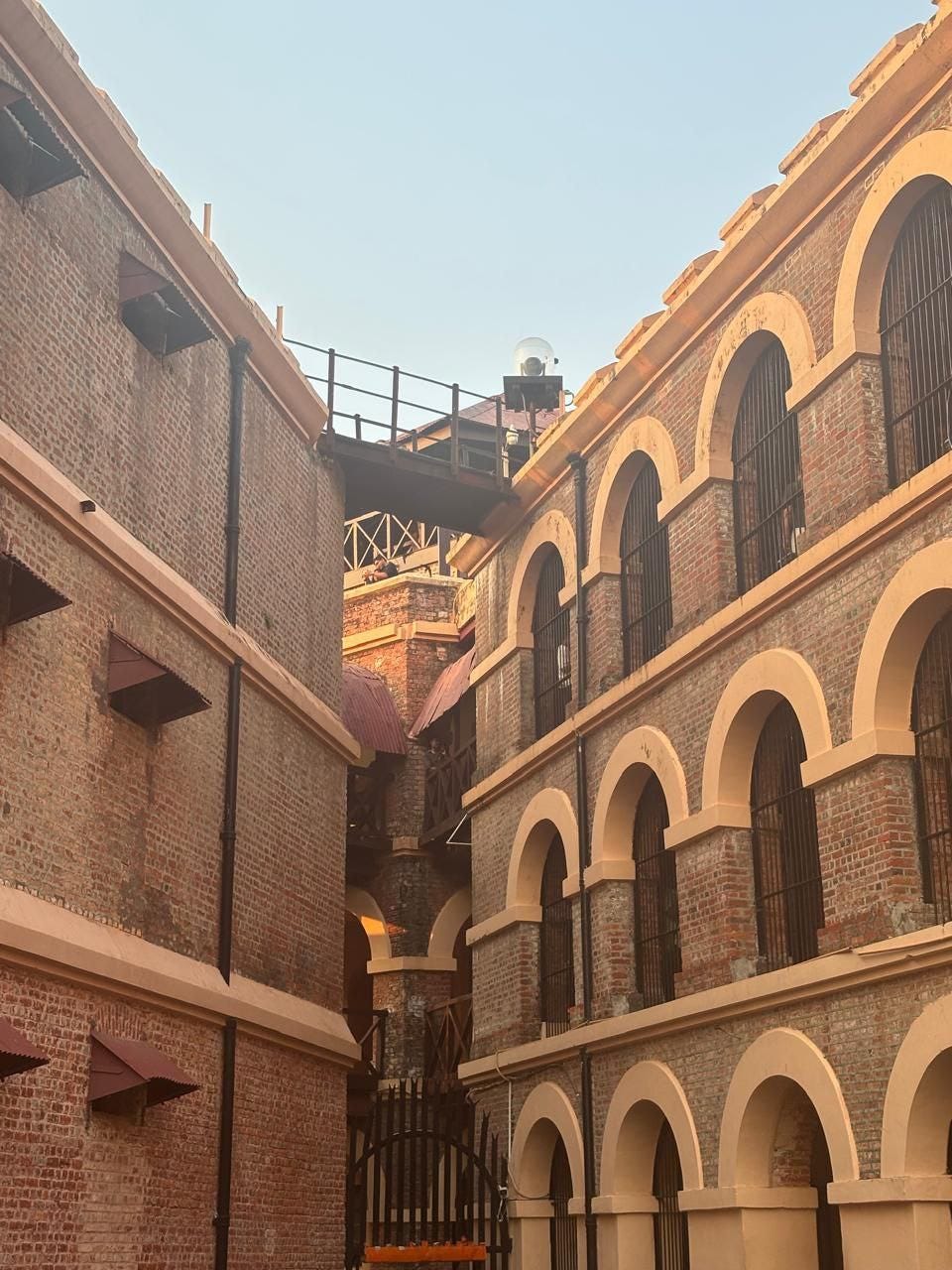
The prisoners of the Cellular Jail were subjected to a range of mental and physical tortures, designed to break their spirits and destroy their sense of identity. They were forced to perform hard labor, often in harsh conditions, and were subjected to physical punishments, such as flogging and solitary confinement. The prisoners were also subjected to mental torture, including sleep deprivation, isolation, and humiliation. The British colonial regime’s use of mental torture was a deliberate attempt to destroy the prisoners’ sense of self and to break their will to resist.
The British had a heartless philosophy that all jail expenses should be met by the prisoners themselves, forcing them into various forms of labor to exploit the natural resources of Andaman. The prisoners were compelled to toil in the island’s lush forests, harvesting timber that was then used to manufacture furniture at the Chatham Mill. Coconuts, abundant in the islands, were brought into the jail, where prisoners were forced to break them open, extract the husk to make coir, and extract the oil. The quotas set by the British were draconian, with prisoners expected to produce far more than what a cattle could yield. Failure to meet these quotas resulted in punishment, meted out by the British-appointed kanganis, prisoners who had been coerced into serving as informants and enforcers. This system of exploitation and oppression was designed to break the prisoners’ spirits, but it only served to strengthen their resolve to resist and fight for their freedom.
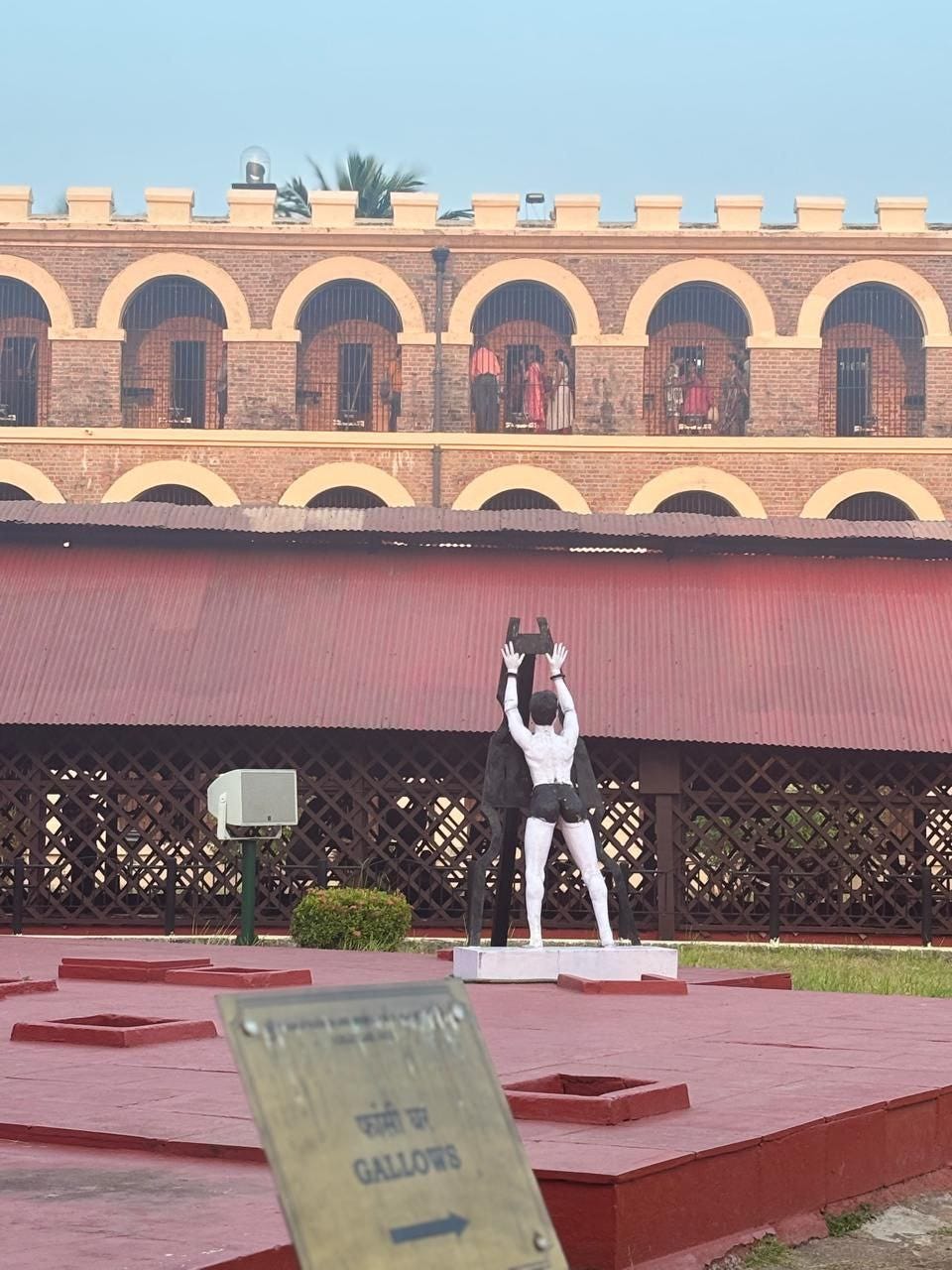
The Cellular Jail’s importance in Indian freedom history cannot be overstated. It stands as a testament to the sacrifices made by countless freedom fighters who were imprisoned, tortured, and even executed within its walls. The prison’s dark past serves as a reminder of the atrocities committed by the British colonial regime and the unwavering dedication of India’s freedom fighters. As I explored the prison’s museum and exhibits, I was struck by the sheer bravery and resilience of those who had fought for India’s independence.

As I navigated the corridors, I came across the eternal lamps lit in memory of the martyrs. The old peepal tree, with its own story to tell, stood tall, bearing witness to the struggles of the past. The workshop, showcasing working models of the prisoners’ crafts, was a poignant reminder of the hardships endured.
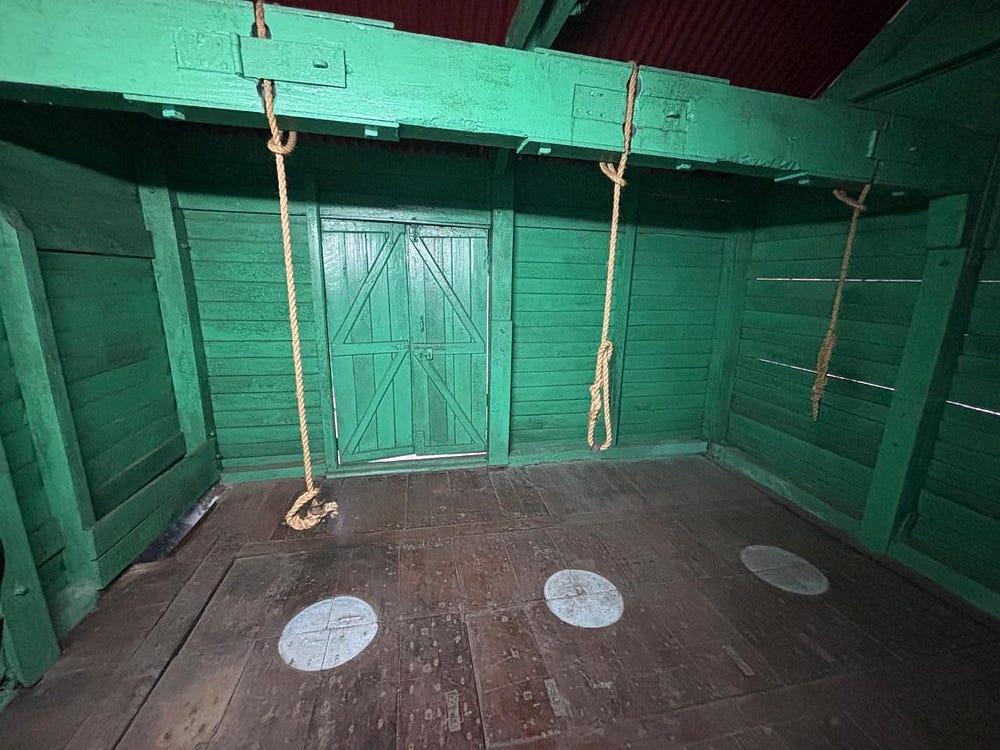
The most unsettling experience was visiting the site where prisoners were hanged, and the adjacent area where they performed their last religious rituals. The weight of history was overwhelming, and I couldn’t help but recall the movie “Kala Pani,” which I had watched in preparation for my trip. I did not enter this place, the above pic was captured by a friend of mine.
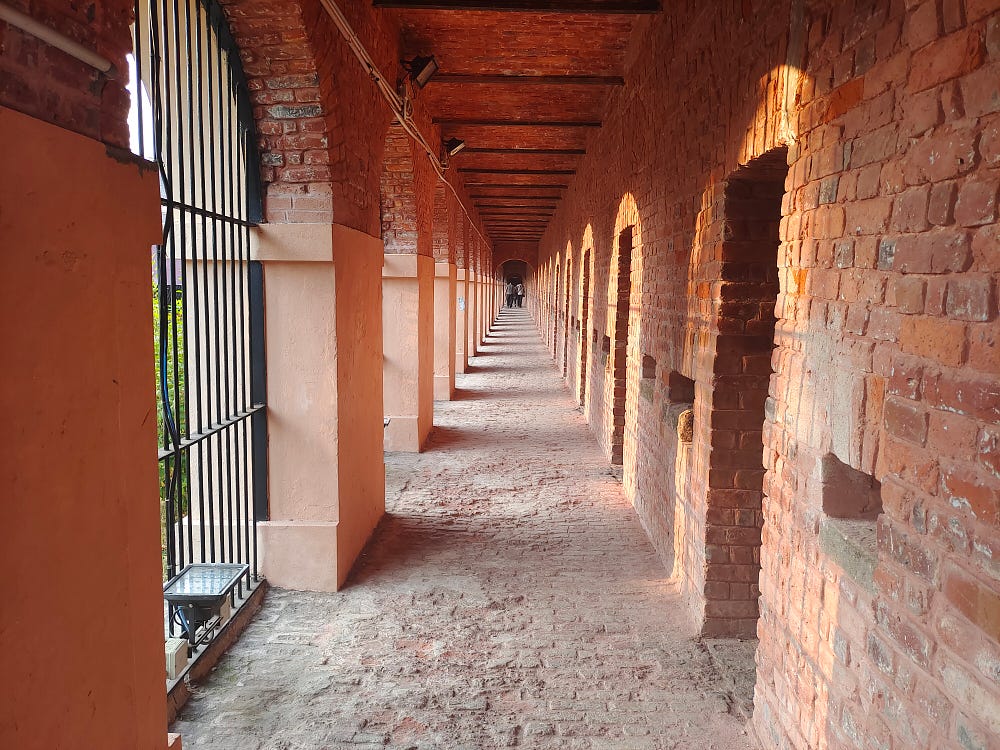
As I walked through the wings of the cellular jail, I could hear them sing
“Sarfaroshi ki tamanna ab hamaare dil mein hai
Dekhna hai zor kitna baazu-e-qaatil mein hai”
I felt a deep sense of connection to the freedom fighters who had sacrificed their lives for our independence. Each brick, each stone, and each cell seemed to whisper stories of courage, resilience, and sacrifice.
Today, the Cellular Jail is a national memorial, attracting visitors from across the country and the world. As I stood in the prison’s central courtyard, surrounded by the remnants of the original structure, I felt a sense of pride and patriotism. The Cellular Jail may have been built as a symbol of British oppression, but it has been transformed into a powerful symbol of India’s struggle for independence. Its architecture and history serve as a poignant reminder of the sacrifices made by India’s freedom fighters, and its importance in Indian history cannot be overstated.
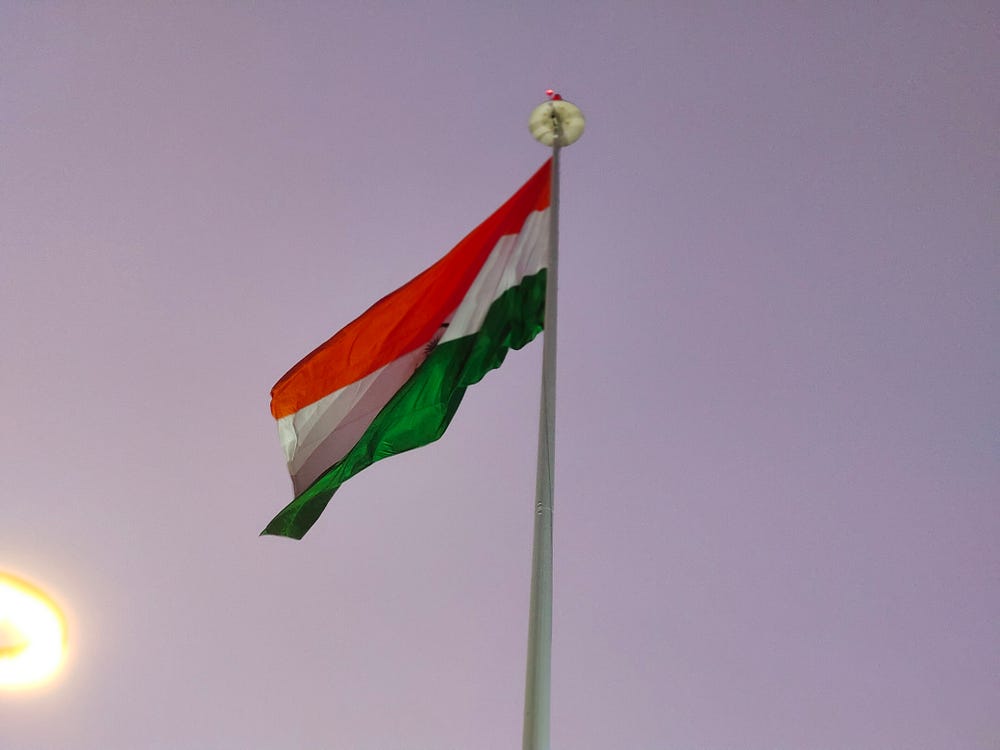
As I stood at the Flag Point, gazing out at the majestic Indian tricolor, I felt a surge of patriotism and a shiver run down my spine. The experience was nothing short of exhilarating, and I couldn’t help but feel a deep sense of connection to the freedom fighters who had sacrificed their lives for our nation’s independence. My visit to the Cellular Jail was a poignant reminder of the struggles of our past, and I felt compelled to return to the jail not once, not twice, but three times during my stay in Andaman. Each visit was a haunting reminder of the atrocities committed within those walls, and yet, it was also a testament to the indomitable spirit of our freedom fighters. The pièce de résistance of my visit was the light and sound show, which was a truly mind-blowing experience. Though photographs and videos were strictly prohibited, the images of that show will remain etched in my memory forever. If you ever find yourself in Andaman, the Cellular Jail and its light and sound show are an absolute must-visit — a poignant reminder of our nation’s turbulent past and a tribute to the brave men and women who fought for our freedom.
My visit to the Cellular Jail was a humbling experience, one that left an indelible mark on my heart. As I continued my journey through the Andamans, I carried with me the memories of those who had fought for our freedom, and the realization that true freedom comes at a great cost.
Stay tuned for the Andaman Tastalogue...
https://taplink.cc/tastalogue

Comments
Post a Comment